daftandbarmy
Army.ca Dinosaur
- Reaction score
- 34,757
- Points
- 1,160
I wonder how our drone vs. drone doctrine is doing in comparison with what's going on in Ukraine right now 


Ready for a Fight? 5 Provocations for Change
Ready for a fight? Change needs to come to how Militaries operate, if they want to win the next war. Here's 5 ways to do it.wavellroom.com
Something new from the Wavell Room on thoughts for the future of air power.

I would argue that now is the perfect time for “low folks on the totem pole” to revise doctrine, especially in light of lessons observed in UKR and elsewhere.Loved this. By the way cost asymmetry has been a concept for over a decade. And really came to the fore when the Israelis used a patriot missile against a drone that you could probably buy on Amazon. There have definitely been calls to incorporate the idea into doctrinal development. But most of us are too low on the totem pole to make a difference here.
Commodore/BGen and below?I would argue that now is the perfect time for “low folks on the totem pole” to revise doctrine, especially in light of lessons observed in UKR and elsewhere.
I guess it depends on what people see as “low folks” - is it the Cpl on the ground, or the Maj staff officer in CADTC or RAWC?
In my experience we've never had, nor do we now have, a shortage of bright and inventive "low folks" - from cpls to capts on up. Unfortunately the CAF is such a constipated bureaucracy that making their ideas into practical and timely applications has become virtually impossible.I would argue that now is the perfect time for “low folks on the totem pole” to revise doctrine, especially in light of lessons observed in UKR and elsewhere.
I guess it depends on what people see as “low folks” - is it the Cpl on the ground, or the Maj staff officer in CADTC or RAWC?
In my experience we've never had, nor do we now have, a shortage of bright and inventive "low folks" - from cpls to capts on up. Unfortunately the CAF is such a constipated bureaucracy that making their ideas into practical and timely applications has become virtually impossible.

Need to teach the Space-X concept of positive risk and positive failures.In my experience we've never had, nor do we now have, a shortage of bright and inventive "low folks" - from cpls to capts on up. Unfortunately the CAF is such a constipated bureaucracy that making their ideas into practical and timely applications has become virtually impossible.

A significant element of the Blue UAS effort is updating software, he said. DIU received “significant feedback from our Ukrainian friends that software is what defines success on the battlefield. In this space, to get the software, you have to be able to iterate quickly,” he said. In Ukraine, drone software has about a two-week lifespan before Russia develops a countermeasure.
“For DIU, in our processes it takes about 90 days for a software update to get a thumbs up,” he said, adding that in the Defense Department it’s 12-plus months. “Neither one of those time frames is acceptable, so we’re piloting a continuously monitored software approach.”
Over the next six months, DIU intends to establish and prove out the approach “and then be able to approve software for release within 96 hours. That’s still longer than we want,” he said. ND
‘Our platforms are too expensive; our platforms aren’t good enough,’” he said.
“They want modularity, meaning we have a flying platform, but if they want to put a camera on or a different radar or different sensor, they want to be able to do that.”
In my experience we've never had, nor do we now have, a shortage of bright and inventive "low folks" - from cpls to capts on up. Unfortunately the CAF is such a constipated bureaucracy that making their ideas into practical and timely applications has become virtually impossible.


Every squad will get anti-drone gear, Marine Corps says
With “zero decision space” to deal with incoming UAVs, troops need tools to take them down.
BY SAM SKOVE
STAFF WRITER
JULY 23, 2024
The Marines plan to equip every squad—from logistics units to reconnaissance teams deep in enemy territory—with a suite of tools to protect them from drones, a Marine officer told Defense One last week ahead of a September competition to pick gear.
Marines deployed to the field are already set to receive some form of protection from powerful anti-air vehicles, such as the Corps’ L-MADIS and MADIS systems.
However, those systems’ protective bubble only goes so far, said Capt. Taylor Barefoot, the Counter Unmanned Aerial Systems Capabilities Integration officer at the Marine Corps’ Capabilities Development Directorate. And Ukrainian troops have found that large, vehicle-based air-defense systems can draw enemy fire—and attract more drones than they have weapons to shoot down.
The Corps therefore wants to provide every unit with a “rudimentary, essential, self-defense capability,” Barefoot said.
The goal of the September competition is to find squad-portable tools that identify drones within a half-mile and weapons to take down ones that weigh up to 55 pounds, Barefoot said. The price tag should be around that of the gear the Corps used to jam improvised explosive devices in Afghanistan and Iraq, he said.
One solution may be to field firearms with smart optics designed to shoot down drones, said Barefoot. The Corps and Army already field some of these systems; troops also practice shooting down drones with normal sights.
However, Barefoot said he wants to find other solutions. As seen in many videos in Ukraine, a human’s natural reaction to a drone flying at them at 100 miles per hour is to hide, not to stand up and shoot, he said.
“I don't want shotguns and M4 [rifles] to be the future” even if they may be a “baseline” for basic anti-drone capabilities, he said.
Another option is low-end anti-air missiles like the Advanced Precision Kill Weapon System, Barefoot said. At under $30,000 a shot, APKWS is far less expensive than AMRAAMs or Patriots—though still far costlier than most adversary drones. The system has been used in Ukraine and, at least in tests, boasts a 100 percent success rate.
Barefoot said that Marine squads could field a stripped-down version of APKWS by mounting a small pod to a tripod, but that would still add about an 81mm mortar’s worth of gear to a squad’s load.
Barefoot said the Corps is also interested in establishing a multi-layered sensor network designed to identify drones before they get too close. Sensors that listen for radio communications might help, but you can’t ID the frequency-hopping drones used in Ukraine against a library of signatures. Visible-light sensors might be more useful, at least in some cases—“if you have an optic that can look at the thing and identify it, it gives you just an added layer of certainty”—but acoustic sensors may work better at night or even on cloudy days, he said.
Barefoot said the September competition is expected to attract several companies with AI-enabled cameras to test.
Ideally, data from all types of sensors—acoustic, visual, and electronic—would be merged and displayed via the Tactical Android Kit, he said. The TAK is open-source software used in the military to visualize a battlefield and share information.
The Corps is also hoping to solve the problem of identifying friendly and enemy drones, said Barefoot. The problem has similarly plagued Ukrainian forces, who routinely shoot down their own drones.
Emitters can be placed on drones to help with IFF, but the devices tend to make drones large to be easily portable by a reconnaissance unit, Barefoot said.
Units could coordinate with air control stations to identify their drones, but a unit under attack by speedy loitering munitions may not have time.
“That is zero decision space,” he said.
Barefoot said artificial intelligence may have a place in counter-drone work. For example, an AI-enabled sensors could help units more quickly identify if they’ve spotted an enemy UAV or just a bird.
AI could also direct 30mm cannons at drone swarms, he added.
“I want to be able to take a block of [electronic emission] tracks off of a sensor screen, and—just like you would select multiple icons on your desktop—just drag and drop across [the drones], and then tell the computer to kill everything in this box,” he said. “The interface is there, all of the components to make that happen are there, I just need the AI to come in and drive the bus.”
Following the trials, the Corps hopes to field some systems to a Marine Air-Ground Task Force, likely in the Pacific, sometime in the next 12 months, he said.

Ukraine’s cheap sensors are helping troops fight off waves of Russian drones
Sub-$500 rig helps save expensive air-defense missiles for bigger threats.
BY AUDREY DECKER
STAFF WRITER
JULY 20, 2024
RAF FAIRFORD, England—Ukraine has a network of almost 10,000 acoustic sensors scattered around the country that locate Russian drones and send targeting information to soldiers in the field who gun them down.
Dubbed “Sky Fortress,” the concept was developed by two Ukrainian engineers in a garage who put a microphone and a cell phone on a six-foot pole to listen for one-way UAVs, said Gen. James Hecker, commander of U.S. Air Forces in Europe and Africa.
“They put about 9,500 of these within their nation and now they get very accurate information that is synthesized in a central computer and sent out to mobile fire teams. And on an iPad, they get a route of flight of these one-way UAVs coming in, and they have a triple-A [anti-aircraft] gun and a person with six hours of training can shoot these down,” Hecker told reporters at the Royal International Air Tattoo on Saturday.
About three months ago, Russia sent a salvo of 84 UAVs into Ukraine, and the system helped the defending troops shoot down all but four, Hecker said.
The system was so effective that the engineers behind the system were invited to demo it at Ramstein Air Base in Germany, Hecker said. Other countries are looking at acoustic sensors, he added, noting that Romania recently did a demo with the system.
Each sensor costs about $400 to $500, he said, which suggests that the entire network costs less than a pair of Patriot air-defense missiles.
Hecker said the U.S. and allied militaries should look for their own ways to dramatically lower operational costs. In April, the U.S. expended missiles worth millions of dollars to take out $30,000 drones launched at Israel from Iran and Iranian proxies.
“That's why I challenge industry, I challenge the NATO air chiefs to come up with cheaper, more creative solutions that will put us maybe, hopefully on the right side of the cost curve, but if not, an equivalent cost curve. Likewise, we need to develop equipment at NATO to put Russia on the wrong side of the cost curve, should we have an Article Five situation,” he said.
Patriot and other heavy-duty air defenses remain vital for Ukraine, whose forces and civil infrastructure have been increasingly hammered by Russian ballistic missiles.
“What we're seeing from the Russians is increased use of ballistic missiles, and that's primarily because of North Korea providing ballistic missiles to them, and that obviously concerns us, but we are making sure that we equip Ukraine so that they can deal with that threat,” Hecker said.
Hecker was asked about Ukraine’s prospects for survival.
“A couple months ago, I was a little bit nervous because the Ukrainians were starting to run short on some of the munitions that are required for defense as well as offense. But through the Ukrainian Defense Contact Group, Secretary Austin and the other defense ministers have stepped up to the plate and recently given Ukraine a lot of equipment that they really needed. So that gives me a little bit more hope as we go on,” he said.
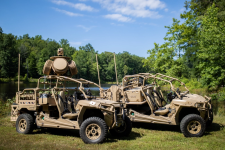
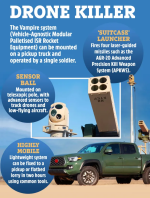


 mil.in.ua
mil.in.ua

 mil.in.ua
mil.in.ua
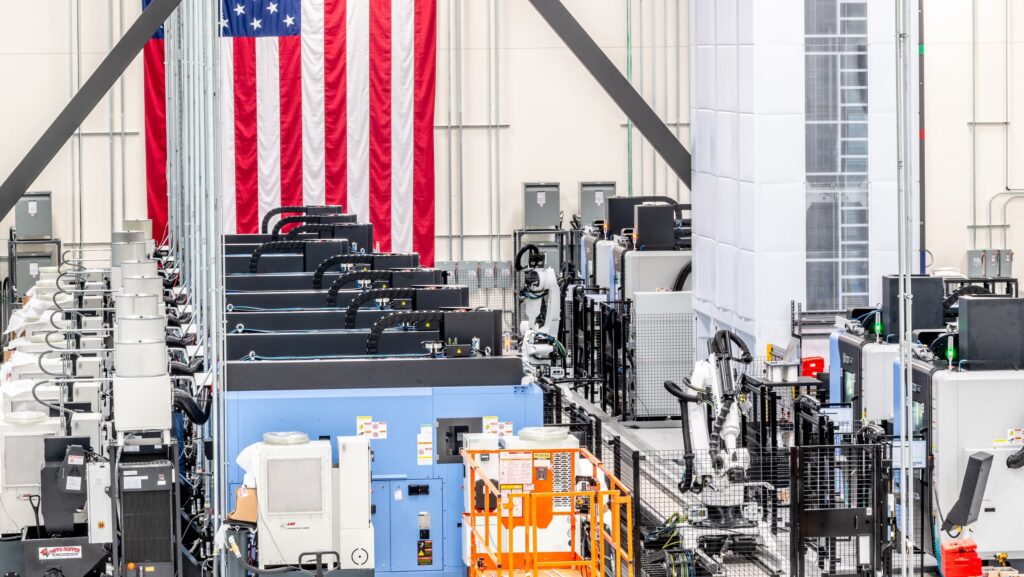
Power’s ambition doesn’t stop there. He told Breaking Defense he wants Hadrian to ramp up to the point where the company has “10 to 20 mega factories in all of the core manufacturing spaces in the country,” producing parts for “all the primes and neo-primes,” referring to both legacy defense contractors like Lockheed Martin and RTX as well as other defense tech startups like Anduril.
Power’s vision of Hadrian is a company that can produce parts so cheaply, quickly and efficiently that it can take over production and supply chain management for defense startups, allowing them to concentrate on developing new tech that Hadrian has the expertise to churn out at high rates.

America’s Space & Defense industry is bottlenecked by the capacity of a network of owner-operated machine shops that produce precision metal components.
Hadrian is building a series of highly automated precision component factories across the US to enable Space & Defense manufacturers get parts 10x faster and halve the cost of making Rockets, Satellites, Jets & Drones.
Austal is working simultaneously “to build parts of aircraft carriers, to build submarines, to build [surface] combatants, to build auxiliary [ships], to build unmanned ships,” Larry Ryder, vice president of business development, told Breaking Defense during a tour of the shipyard earlier this month. “There’s no other yard that has that portfolio, especially within one yard, so it’s a unique evolution.”

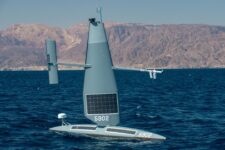
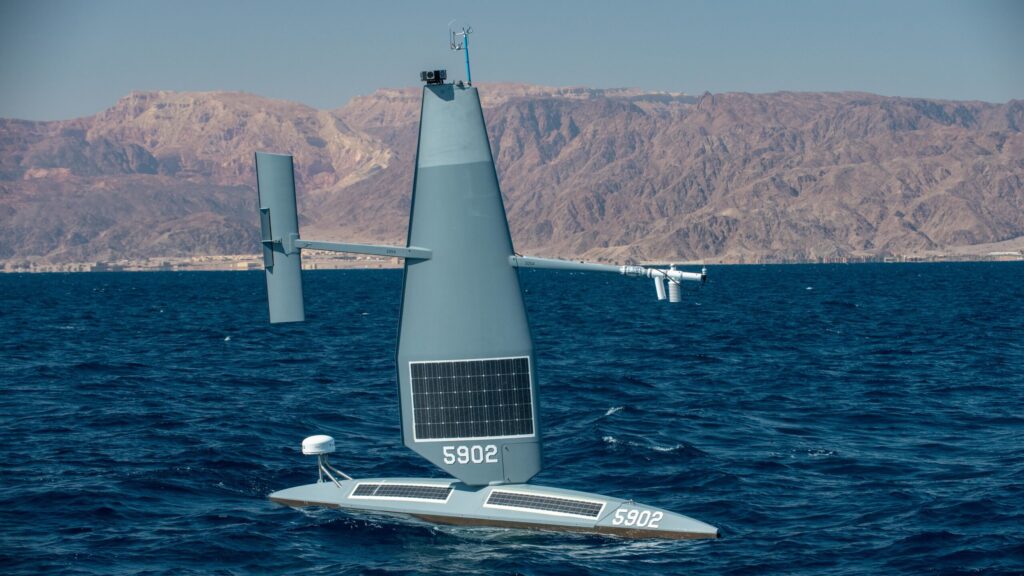
Twice in the last month, Iran has attempted to abduct US unmanned surface vessels produced by Saildrone. But the company’s CEO says ... if someone takes it, good luck. Keep it, it’s worthless. We’ve got hundreds of them,”
If a drone is stolen or destroyed, Jenkins said his company simply deploys another to replace it.
“I think it’d be a very different problem if you had a lot of [Vertical Launch Systems] or other hardware onboard. I think as soon as you weaponize unmanned systems, you actually make it a target of theft.”


Reflecting on the Russian experience of adapting small drones, one U.S. Army officer working in capability integration remarked “how easy is it to change doctrine? Kind of a tectonic, glacial process, right?” Nonetheless, mercurial modern warfare demands it. It will be an iterative, two-way process. Acquiring and assigning tactical UAS is a top-down decision, but experimenting and assimilating them must be bottom-up followed by a top-down codification in doctrine.
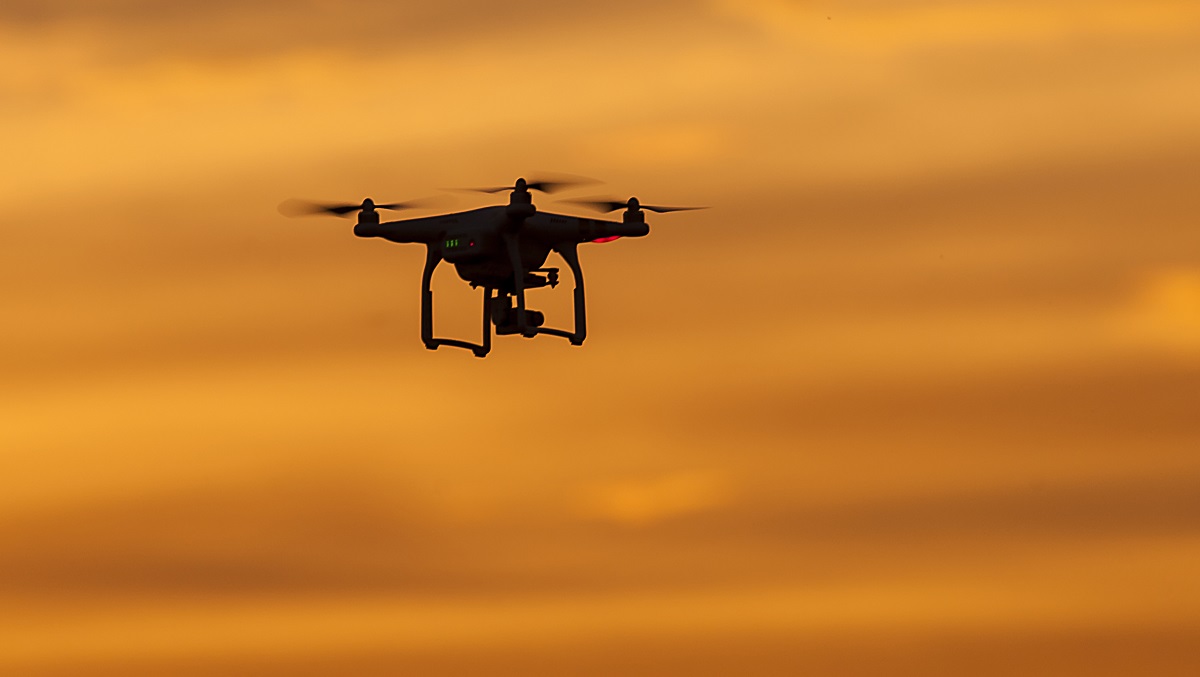
 warroom.armywarcollege.edu
warroom.armywarcollege.edu
Admiral Zumwalt, another destroyer man, complained about the dominance of naval aviation during his tenure as CNO during the early 1970s and once told me that he had to use special strategies to get the Tomahawk cruise missile into the hands of the surface navy. During its development, Zumwalt kept Tomahawk’s progress very low key and used back channels to make it immune to cancelation by the naval aviators when he left office in 1974. Luckily this strategy worked, and Tomahawk went into service. Now, surface warships and submarines can project power ashore without being dependent on supercarriers, something that is not in the interests of the naval aviation community.

PMA 201 is targeting a unit cost target of US$1.5 million per round, and a minimum annual production rate of 250 all-up-rounds (AURs).
A number of desired requirements have been outlined by NAVAIR. These include a warhead of less than 500 lb (226.7 kg); a guidance system able to detects and target moving surface combatants, surface targets, and stationary land targets; a terminal targeting capability including one or more modalities (GPS, inertial navigation, infrared, and/or imagery); and a navigation system capable of operating in a GPS degraded or denied environment.

